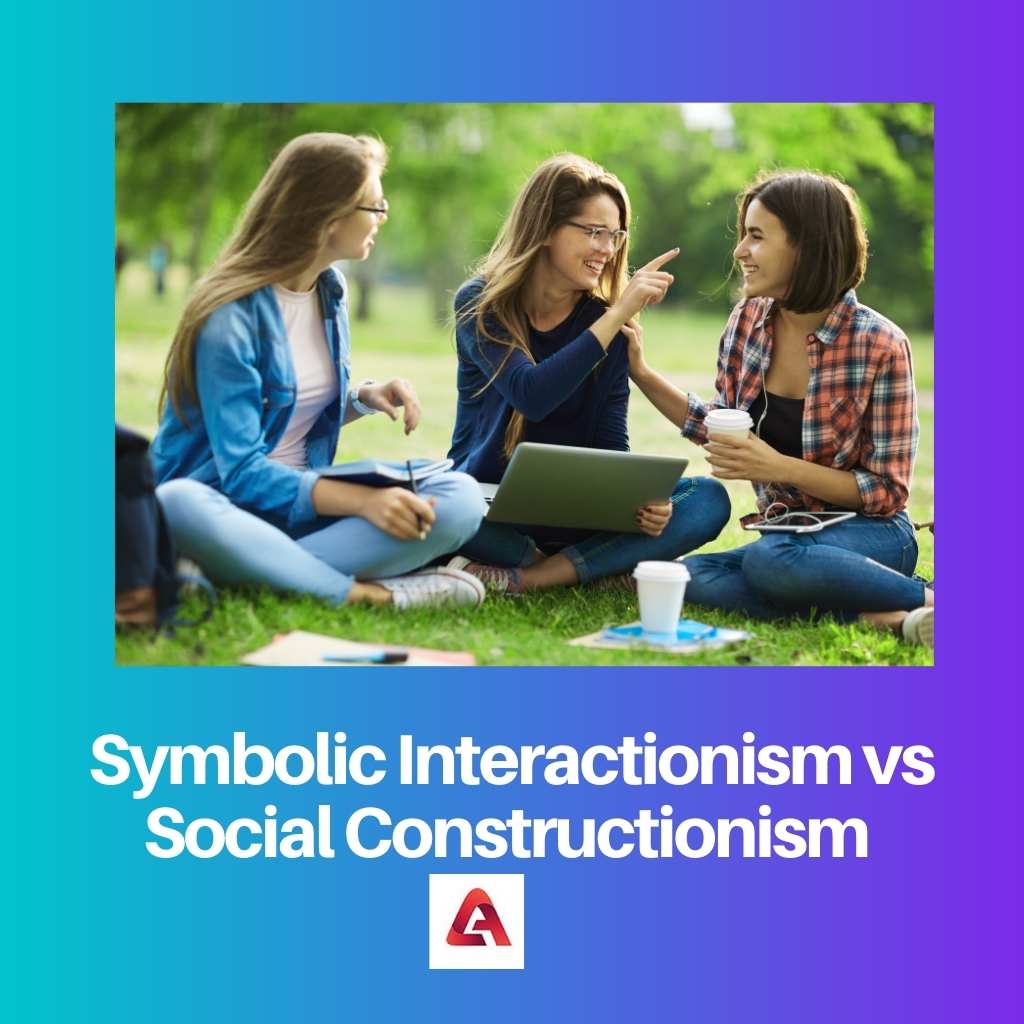When it comes to sociology, it can be described as a social science that aims at human social behaviour, social relationship patterns, cultural aspects, and social interaction linked with everyday life.
They mainly use critical analysis and empirical investigation methods. Mainly to develop a knowledge body about social change and social order.
Sociology’s traditional focuses comprise law, deviance, social class, gender, sexuality, social stratification, etc. Several sociological theories include conflict theory, objectivity, subjectivity, structural functionalism, strain theory, etc.
In this article, the chief aim is to differentiate symbolic interactionism and social constructionism.
Key Takeaways
- Symbolic interactionism focuses on individual interactions and the meanings people assign to objects and events, while social constructionism examines how social reality is constructed through shared knowledge and cultural practices.
- Symbolic interactionism is grounded in micro-level analysis, whereas social constructionism applies to both micro and macro levels of analysis.
- Symbolic interactionism emphasizes the importance of symbols and language in shaping human behavior, while social constructionism highlights the role of social institutions and power structures in constructing reality.
Symbolic Interactionism vs Social Constructionism
Symbolic interactionism focuses on the understanding of self-role. It also focuses on the study of social interaction among people. It also defines symbols used by people for communication. Social constructionism focuses on the understanding of social work. It defines the point of view of people towards society.

Symbolic interactionism is also known as the symbolic interaction perspective, a major sociological theory framework. This perspective relies on the symbolic meaning that is built and developed upon in the social interaction process by people.
The importance of symbolic interactionism can be seen in social psychology and micro-sociology.
Social constructionism has been instrumental in grounded theory modelling. In attempting to make the social world since the view of knowledge of social constructionist as contrary to created.
The origin of social constructionism is an attempt to become to terms with reality’s nature.
Comparison Table
| Parameters of Comparison | Symbolic Interactionism | Social Constructionism |
|---|---|---|
| Father | George Herbert Mead | Thomas Luckman and Peter L. Berger |
| Focus | Making sense of social and self-roles | Making sense of the structure and nature of social work |
| Nature | Micro-level theory | Macro-level theory |
| Background | Mass immigration to Chicago and Chicago school of thought | The social construction of reality |
| Example | A bald eagle means America and freedom. | Blue is for boys, while pink is for girls. |
What is Symbolic Interactionism?
Symbolic interactionism is a theory that is linked to sociology and develops from practical alludes and considerations to specific interaction and communication’s effect on people. Usually, to make normal implications and images for correspondence and deduction with others.
Many symbolic interactionists believe in indeed the existence of physical reality by the social definition of an individual. Social definitions do evolve in relation or part to something real.
Thus, people fail to respond directly to this reality but rather to the reality’s social understanding.
The majority of research interactionists use qualitative research methods such as participant observation to study social interaction aspects and the selves of the individual.
They argue that close immersion and contact in the everyday participant’s activities is vital for understanding the action’s meaning.
Symbolic interactionism is criticized for being in the research methods overly impressionistic and unsystematic in its theories. The theory is not only one theory despite rather the framework for several distinctive theories.
Due to symbolic interactionism’s lack of testability, some theorists have a problem with it.
What is Social Constructionism?
Social constructionism is a theory in communication theory, social ontology, and theory in sociology that proposes that there are certain fact kinds.
Rather than depend on reality, instead of depending on shared thinking’s way and the world’s representation that people’s groups evolve collaboratively.
Social constructionism centres on the notion that meaning is evolved in coordination with others in comparison to separately by each individual.
This theory has been characterized as a neo-Kantian or neo-Marxism theory in which social constructionism switches the transcendental subject.
Some of the social constructs are obvious, like money or the currency’s concept, in that people agreed to offer value/ importance. Meanwhile, others are controversial and debated hotly, like the self-identities concept.
There is strong and weak social constructionism. Strong social constructionism undermines the science’s foundation as the theory and objectivity’s pursuit. Week social constructionism relies on brute facts related to physical particles or simply institutional facts.
Main Differences Between Symbolic Interactionism and Social Constructionism
- The chief function of symbolic interactionism is to examine how humans use symbols mainly for communication/interaction with each other. On the contrary, social constructionism examines how humans construct theoretical principles and concepts as a society.
- When it comes to theory, symbolic interactionism comprises social action (product of interactions), social interaction (origin of the meaning), and humans act on meaning. On the other hand, symbolic constructionism comprises groups & people who actively maintain & form their own perception of reality.
- The advantage of symbolic interactionism is that it fails to pose one society while focusing on individual acts and what goes on between people. In contrast, the advantage of social constructionism is that it shows how the stance of social constructionists can be used for inquiry critically.
- The disadvantage of symbolic interactionism is that we fail to choose the action’s consequences and also underestimate the structure’s power. On the flip side, the disadvantage of promoting social constructionism is that we almost necessarily abandon the idea that truth exists.
- Symbolic interactionism and social constructionism are two sociological theories in which symbolic interactionism analysis a society by addressing the subjective definition that people give behaviours, events, and objects. Meanwhile, social constructionism states knowledge is a construct of society.
References
- https://books.google.com/books?hl=en&lr=&id=HVuognZFofoC&oi=fnd&pg=PA1&dq=symbolic+interactionism&ots=4oShI7CW5A&sig=MUflpkAguB1YBFpfJkRMr4GrByo
- https://www.taylorfrancis.com/books/mono/10.4324/9781315715421/social-constructionism-vivien-burr
